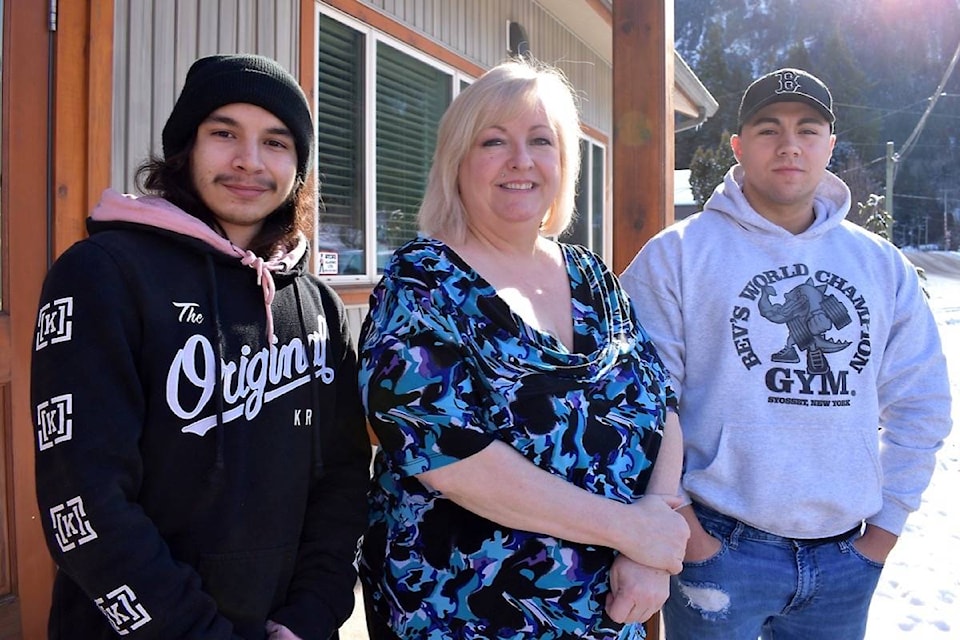Tiny homes are coming to the town of Hope, B.C., and they’re coming in the form of a Yale First Nation economic development project.
What may be a win-win situation for both the Nation and people in need of housing in Hope is still in its infancy, said housing manager Crystal Sedore. The idea is to build a dozen 280-square-foot homes on the Nation’s land about 10 minutes outside of Hope along Highway 7, for rent at affordable rates to any members of the community.
The one to two-bedroom units will be available to people looking to live a “clean, quiet life” and they will be truly affordable, Sedore assured. If tenants are on social assistance the units could rent for as low as $375 per month for a single person and $580 per month for two people.
It is uncommon for First Nations economic development projects to have a goal of benefitting the wider community, Sedore said. She credits the ‘visionary’ Yale First Nation chief and councillors with their ability to look at the needs of the community as a whole, Indigenous and non-Indigenous.
This project comes on the heels of the , a joint Yale First Nation, Grace Baptist Church and Read Right Society project, created to fill the need for childcare in Hope.
Mayor Wilfried Vicktor said the tiny homes are an innovative approach to the “chronic housing shortage” in Hope. While the district doesn’t have joint project ongoing with Yale, the possibility is there to support each other as neighbours, “particularly when it comes to grant funding” Vicktor added.
There are many Indigenous people who are not connected to a Nation or band — non-status First Nations, people from Nations in other parts of Canada or even the United States, Inuit or Metis — who could benefit from the tiny home project.
“These are the sort of people who fall through the cracks when it comes to Aboriginal services, and so by us providing housing off-reserve, we are offering all of those people options as well,” Sedore said. “Off-reserve projects like this will allow us to gather them in.”
Sedore wants to see applicants with a strong interest in tiny home living, a distinct way of life not suitable for everyone.
“Let’s face it, these are very, very small units. There’s no room for storage, no room for pets, no room for recreation within the unit,” she said.
Sedore is currently looking at how to design the units.
“We do have a few really, really exciting designs, they’re going to be clean, modern, efficient,” she said.
“We’re going to be incorporating what they call tiny home technologies, so things like the bookcase turns around and turns into a ladder to take you up to the loft, a kitchen table that converts to a couch or a couch that converts to a bed.”
A focus for the homes is energy efficiency, with the goal of zero dollars in hydro bills thanks to solar panels and energy efficient building materials. This focus is an extension of on-reserve homes to the rigorous passive house standard.
The houses will be built in a modular fashion, meaning they will be assembled in a factory and will be shipped ready to place onto a foundation.
As modular becomes less of a dirty word and better materials are used to build, Sedore said the benefits of modular are many. The builds are more affordable and more effective, as tenants can move in the day after a tiny home is put onto its foundation. Issues of mould and mildew are also less than a regular home build, as they are built inside.
The project will be an economic development project for the Nation: the profits gained from what is left over from mortgage payments will go back to the Nation’s economic development coffers.
In order to further benefit the Nation, plans are to build a second dozen tiny homes to sell. Sedore has heard from several homeowners in the Fraser Canyon and Hope who are interested in purchasing.
Sedore said there could be potential to have these homes in the backyard for seniors or family members in need of housing, although zoning would need to change for many lots within Hope.
Is there more to this story?
emelie.peacock@hopestandard.com
Like us on and follow us on



